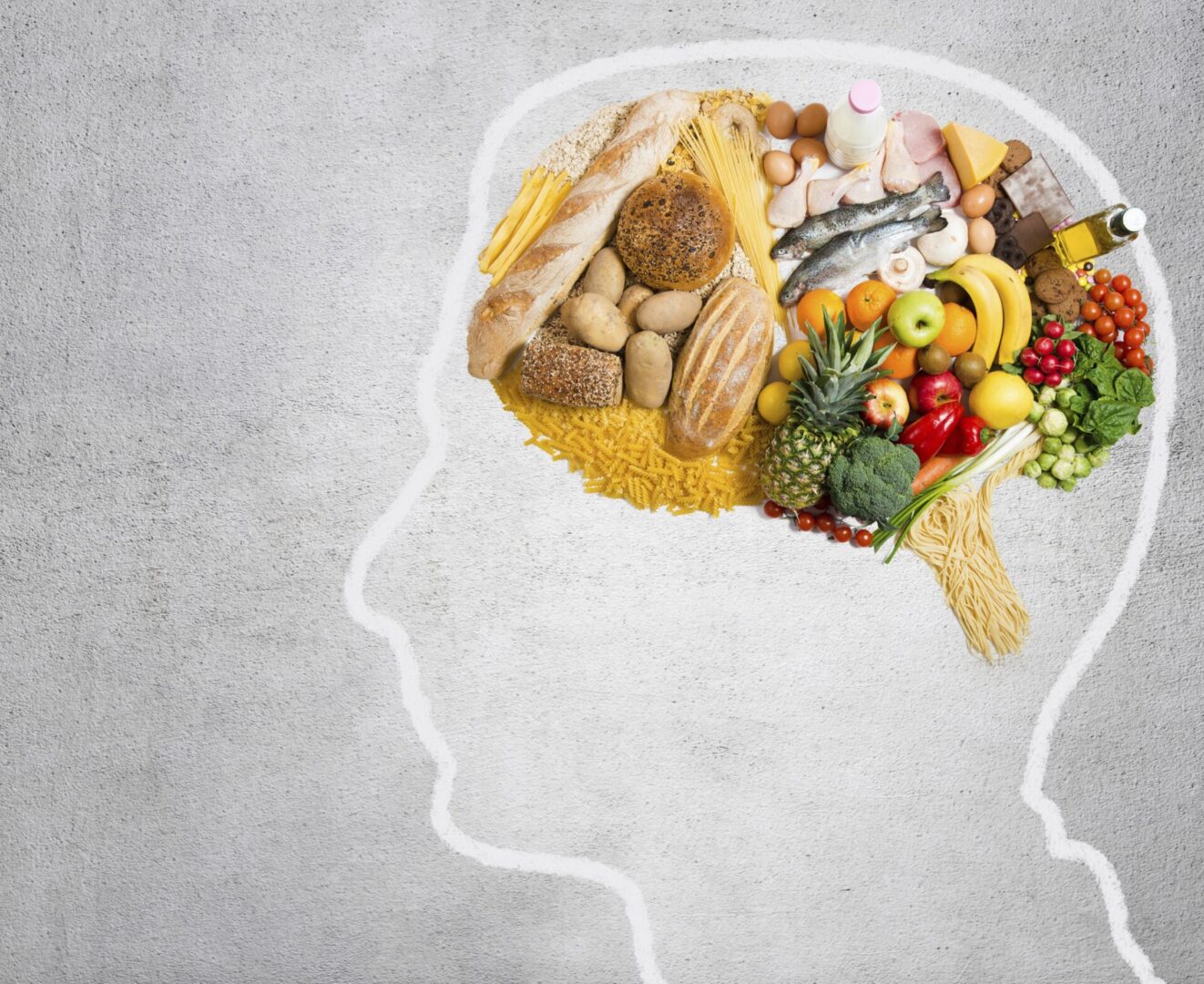Eating Disorders

What Is an Eating Disorder?
An eating disorder (ED) is a medical/psychiatric condition that consists of disordered eating patterns that cause significant psychological distress and leads to impairment in an individual’s life in areas such as personal relationships, academics, work, and/or social interactions. However, an eating disorder can also be thought of as a dysfunctional coping mechanism similar to other dysfunctional coping mechanisms such as alcohol and substance abuse. And while many individuals with an eating disorder may seem resistant to changing their behaviors, they usually wish they never had the ED to begin with.
Often, the general public and misinformed individuals believe that an ED is about one’s preoccupation with wanting to “look good” and a desire to be thin. This is akin to saying an alcoholic drink because he is thirsty. An eating disorder numbs and preoccupies an individual’s thoughts to the point where there is an “escape” from reality. As a result, patients often lose connections with friends and family and suffer setbacks in work and academics. Furthermore, outsiders can only see a fraction of the behaviors and physical attributes of an eating disorder and never can see or experience what is going on inside the mind of a person suffering from an eating disorder. It is this mental dialogue that causes the great distress that truly defines an eating disorder. It is an internal voice that is constantly thinking and worrying about food, weight, body image, calories, exercise, and related eating disorder obsessions. Additionally, that internal voice is very self-demeaning telling oneself that they are a bad person, undeserving, and not worth anything. It is this component of the eating disorder that others are unaware of in a person who struggles, yet it is this component that makes an eating disorder so devastating. An eating disorder is NOT a choice.
An eating disorder takes the intangible emotional world that at times can make someone feel they have no control over, and refocuses their thoughts on more tangible things. One cannot pick up and hold emotions. You cannot visually see emotions and they cannot be avoided. There are no numbers or units associated with emotions so one cannot measure them. People often feel they cannot control what emotions “come in,” and what emotions “go out.” The emotional aspect of stressors in life can often not be avoided. But with an ED one can look at foods, hold them, see them. They can measure calories or their weight and attempt to regulate those numbers. They can decide what food goes in, and even what comes out. They can avoid certain foods, events, picnics, and restaurants. There is no need to, nor time to, focus on the stressors in life that can create pressure. An ED alters how a person feels. They do not feel sad, they “feel fat.” A false perception is formed that happiness can be achieved by reaching their eating disorder goals. Frustration occurs because there is no true happiness when a goal is reached. And the cycle continues.
Still, an eating disorder, despite its harmful and even potentially lethal effects, serves a purpose: it acts as a coping tool. Granted, not a healthy one, but nonetheless, to the individual it is an escape from dealing with life stressors that cause pain to a person’s ego. An ED is a way to “self-medicate” just as alcohol, illicit drug use, gambling, sex, shopping addictions, and other harmful behaviors are for others. The “side effects” of self-medicating with eating disorders are what makes them have the highest mortality rate (even greater than depression, bipolar disorder, schizophrenia, etc.) in all of psychiatry.


Facts About Eating Disorders and Body Dysmorphic Disorder
The prevalence of anorexia nervosa is about 1-2.2% of the general population.
The prevalence of bulimia nervosa is about 1-2% of the general population with 5-10% having some symptoms.
The prevalence of binge eating disorder (BED is about 1-5% of the general population.
The typical person who has an eating disorder intelligent, often a perfectionist, from a family of middle to high socioeconomic status, and eating disorders have the highest mortality rate of any psychiatric disorder (10-15%).
In deaths related to eating disorders, about 50% are from medical complications (especially cardiac) and the other 50% are from suicide.
Females account for about 90% of the cases of eating disorders.
Nearly 70-80% of individuals with eating disorders also have another related psychiatric condition (i.e. depression, anxiety, OCD, post-traumatic stress disorder, etc.)
Nearly 30% of individuals with an eating disorder may have coexisting alcohol or illicit substance use issues.
Even fully recovered patients who have had a prolonged eating disorder may suffer a lifetime of related complications.
The prevalence of body dysmorphic disorder (BDD) is 7-12% of the general population and is often associated with an eating disorder.
About 7-12% of patients undergoing plastic surgery suffer from BDD, and in follow-up studies had greater BDD issues after surgery.
Diagnosing an Eating Disorder
For clinicians, the “official” diagnosis of an eating disorder is made by using the criteria listed in the Diagnostic and Statistical Manuel V Edition (DSM-V). However, the one criteria the DSM-V fails to emphasize is the persistent, obsessive, relentless self-talk in one’s mind, not only about food, weight, calories, vomiting and purging, exercise, body picking and measuring, and physical self-assessment, but there comes with that an overload of self-degradation, feelings of worthlessness, disappointment, hopelessness for a “normal life,’ and often a will to live. It is these internal thoughts that lie at the core of the immense distress that torments the sufferer. Unfortunately, these thoughts are not taken onto concern for DSM-V diagnosis codes for insurance consideration at even treatment planning. Please remember that even when one no longer meets the DSM-V criteria for an eating disorder diagnosis, one may still be internally suffering and desperate.

DSM-V Diagnostic Criteria for Eating Disorders
Anorexia Nervosa
Anorexia nervosa (AN) is a disorder in which individuals exhibit significant weight loss and extreme restrictions in their food intake. It is estimated that 1%-2.2% of the population meet criteria for anorexia nervosa which includes:
-
Restriction of energy intake relative to requirements, leading to significantly low body weight in the context of age, sex, developmental trajectory, and physical health. Significantly low weight is defined as a weight that is less than minimally normal or, for children and adolescents, less than minimally expected.
-
Intense fear of gaining weight or of becoming fat, or persistent behavior that interferes with weight gain, even though at a significantly low weight.
-
Disturbance in the way in which one’s body weight or shape is experienced, undue influence of body weight or shape on self-evaluation, or persistent lack of recognition of the seriousness of the current low body weight.
Specify whether:
Restricting type: During the last three months, the individual has not engaged in recurrent episodes of binge eating or purging behavior (i.e. self-induced vomiting, or the misuse of laxatives, diuretics, or enemas). This subtype describes presentations in which weight loss is accomplished primarily through dieting, fasting, and/or excessive exercise.
Binge-eating/purging type: During the last three months, the individual has engaged in recurrent episodes of binge eating or purging behavior (i.e. self-induced vomiting, or the misuse of laxatives, diuretics, or enemas).
Bulimia Nervosa
Bulimia nervosa (BN) is a disorder in which individuals eat excessive amounts of food in a short period of time and afterwards eliminate this food from their body through some type of purging behavior. It is estimated that between 1.1% to 4.2% of the female population suffers from BN. Criteria includes:
-
Recurrent episodes of binge eating. An episode of binge eating is characterized by both:
1. Eating in a discrete period of time (e.g. within any 2-hour period), an amount of food that is definitely larger than what most individuals would eat in a similar period of time under similar circumstances;
2. A sense of lack of control over eating during the episodes (e.g. a feeling that one cannot stop eating or control what or how much one is eating.
-
Recurrent inappropriate compensatory behaviors to prevent weight gain, such as self-induced vomiting; misuse of laxatives, diuretics, or other medications; fasting; or excessive exercise.
-
The binge eating and inappropriate compensatory behaviors both occur, on average, at least once a week for 3 months.
-
Self-evaluation is unduly influenced by body shape and weight.
-
The disturbance does not occur exclusively during episodes of anorexia nervosa.
Binge-Eating Disorder (BED)
-
Recurrent episodes of binge eating. An episode of binge eating is characterized by both:
1. Eating in a discrete period of time (e.g. within any 2 hour period), an amount of food that is definitely larger than what most individuals would eat in a similar period of time under
similar circumstances;2. A sense of lack of control over eating during the episodes (e.g. a feeling that one cannot stop eating or control what or how much one is eating).
-
Binge eating episodes are associated with three or more of
the following:1. Eating much more rapidly than normal.
2. Eating until feeling uncomfortably full.
3. Eating large amounts of food when not feeling
physically hungry.
4. Eating alone because of feeling embarrassed by how much one is eating.
5. Feeling disgusted with oneself, depressed, or very
guilty afterwards. -
Marked distress regarding binge eating is present.
-
The binge eating occurs, on average, at least once a week
for 3 months. -
The binge eating is not associated with the recurrent use of inappropriate compensatory behavior as in bulimia nervosa and does not occur exclusively during the course of bulimia nervosa or anorexia nervosa.
Avoidant/Restrictive Food Intake Disorder (ARFID)
A feeding or eating disturbance (e.g. lack of apparent interest in eating food; avoidance based on the sensory characteristics of food; concern about aversive consequences of eating) as manifested by persistent failure to meet appropriate nutritional and/or energy needs associated with one (or more) of the following:
-
Significant weight loss (or failure to achieve expected weight gain or faltering growth in children).
-
Significant nutritional deficiency.
-
Dependence on enteral feeding or oral nutritional supplements.
-
Marked interference with psychosocial functioning.
-
The disturbance is not better explained by lack of available food or by an associated culturally sanctioned practice.
-
The eating disturbance does not occur exclusively during the course of anorexia nervosa or bulimia nervosa, and there is no evidence of a disturbance in the way in which one’s body weight or shape is experienced.
-
The eating disturbance is not attributable to a concurrent medical condition or not better explained by another mental disorder. When the eating disturbance occurs in the context of another condition or disorder, the severity of the eating disturbance exceeds that routinely associated with the condition or disorder and warrants additional clinical attention.
PICA
-
Persistent eating of nonnutritive, nonfood substances over the period of at least 1 month.
-
The eating of nonnutritive, nonfood substances the inappropriate to the developmental level of the individual.
-
The eating behavior is not part of a culturally supported or socially normative practice.
-
If the eating behavior occurs in the context of another mental disorder (e.g. intellectual disability, autism spectrum disorder) or medical condition (e.g. pregnancy), it is sufficiently severe to warrant additional clinical attention.
Individuals with pica have been reported to mouth and/or ingest a wide variety of nonfood substances, including, but not limited to, clay, dirt, sand, stones, pebbles, hair, feces, lead, laundry starch, vinyl gloves, plastic, pencil erasers, ice, foam rubber, fingernails, paper, paint chips, coal, chalk, wood, plaster, light bulbs, needles, string, cigarette butts, wire, and burnt matches.
Rumination Disorder
-
Repeated regurgitation of food over the period of at least one month. Regurgitated food may be re-chewed, re-swallowed, or spit out.
-
Not attributable to an associated gastrointestinal or other medical condition (e.g. reflux).
-
Does not occur exclusively during the course of anorexia nervosa, bulimia nervosa, binge-eating disorder, or avoidant/restrictive food intake disorder.
-
If symptoms occur in the context of another mental disorder (e.g. intellectual disability), they are sufficiently severe to warrant additional clinical attention.
Other Specified Feeding or Eating Disorder
Symptoms characteristic of a feeding or eating disorder that cause clinical distress or impairment in social, occupational, or other important areas of functioning predominate.
However, DO NOT meet the full criteria for any of the disorders in the feeding and eating disorders diagnostic class.
This category can also be used in situations to communicate the specific reason the presentation does not meet the criteria for a specific eating disorder.
This is done by recording “other specified feeding or eating disorder” followed by the specific reason e.g. “bulimia nervosa- low frequency”.
Examples:
1. Atypical Anorexia Nervosa: All of the criteria for anorexia nervosa are met, except that despite significant weight loss, the individual’s weight is within or above the normal range.
2. Bulimia Nervosa (of low frequency and/or limited duration): All of the criteria for bulimia nervosa are met, except that binge eating and inappropriate compensatory behaviors occur, on average, less than once a week and/ or for less than 3 months.
3. Binge-Eating Disorder (of low frequency and/or limited duration): All of the criteria for binge-eating disorder are met, except that the binge occurs, on average, less than once a week and/ or for less than 3 months.
4. Purging Disorder: Recurrent purging behavior to influence weight or shape (e.g. self-induced vomiting; misuse of laxatives, diuretics, or other medications) in the absence of binge eating.
5. Night eating syndrome: Recurrent episodes of night eating, as manifested by eating after awakening from sleep or by excessive food consumption after the evening meal. There is awareness of recall of the eating. The night eating is not better explained by external influences such as changes in the individual’s sleep-wake cycle or by local social norms. The night eating causes significant distress and/or impairment in functioning. The disordered pattern of eating is not better explained by binge-eating disorder and or another mental disorder, including substance use, and is not attributable to another medical disorder or to an effect of medication.
Unspecified Feeding or Eating Disorder
Symptoms characteristic of a feeding and eating disorder and cause clinically significant distress or impairment in social, occupational or other important areas of functioning predominate:
However, DO NOT meet the full criteria for any of the disorders in the feeding and eating disorders diagnostic class.
Used when the clinician chooses not to specify the reason that criteria are not met for a specific feeding and eating disorder.
This includes times when there is insufficient information to make a more specific diagnosis (e.g. in an emergency room setting).

What Causes an Eating Disorder?
Patients, families, and others often ask the question, “What causes an eating disorder?” While the cause of the onset of an eating disorder is not the same for each person, perhaps the best way to understand an eating disorder and how it comes about is to understand what Dr. DeSarbo refers to as the “4 P’s” of an eating disorder. And while many people who suffer from an eating disorder share some common feelings, obsessive thoughts and troubling behaviors, each individual has their own combination of the “4 P’s” which makes their condition unique to them.
The 1st “P” are the Predisposing Factors. Eating disorders and other mental health conditions are thought to have underlying genetic factors that are inherited at birth much in the same way that eye and hair color is determined by genetics. Several medical and psychiatric conditions, including eating disorders, have been shown to have suspected genetic markers that MAY predispose one to develop certain conditions and certain specific gene markers have been identified by prominent eating disorder researchers.
The 2nd “P” are the Precipitating Factors. Just because one inherits the genetic properties that may make one prone to a certain illness, it does not mean they will get that illness. It is believed that many people may be genetically prone to conditions such as heart disease. Still, if they eat healthy, exercise, avoid tobacco, and generally take care of themselves, they may never develop the illness. Likewise, with eating disorders, there are certain types of stressors and triggering events that can “set off” disordered eating patterns in an individual including trauma, excessive stress, emphasis on dieting and body image, media exposure, and dysfunctional relationships.
The 3rd “P” are the Perpetuating Factors. Perpetuating factors are conditions and situations that support and maintain the disordered eating patterns. Perpetuating factors may include environmental stressors such as difficult interpersonal relationships or they may be of a biological nature such as changes that occur in neurotransmitters and the brain’s anatomy that can be affected by an eating disorder. Other perpetuating factors can include denial of the condition by the patient and or their support system or a lack of quality treatment.
The 4th “P” is the Prescription. The prescription for an eating disorder is the treatment plan. With many eating disorder patients, the prescription includes physician-based treatment working in conjunction with other health care providers including qualified licensed therapists, nutritional consultants, group work, and family therapy at times. A medical physician experienced in eating disorders often monitors vital signs, blood and urine chemistries, cardiac and gastrointestinal functioning and, at times, prescribes medications, when indicated, for co-existing medical or psychiatric conditions. Part of the prescription also involves helping the patient with emotional states associated with the significant distress found with eating disorders and psychotherapists often utilize cognitive-behavioral therapy as well as other modalities in the treatment process. Perhaps the most important part of the prescription is making sure that all involved in the treatment are very well trained and experienced with working with eating disorders.